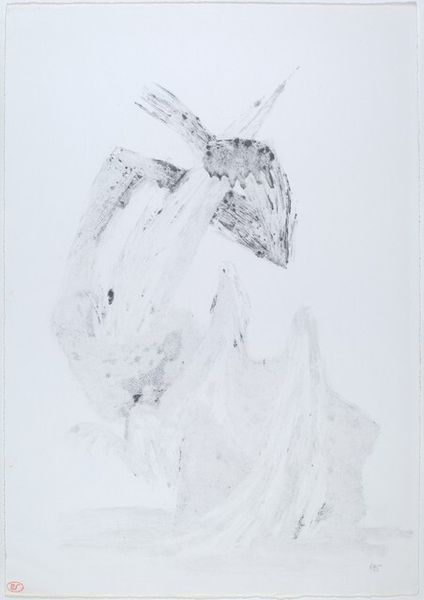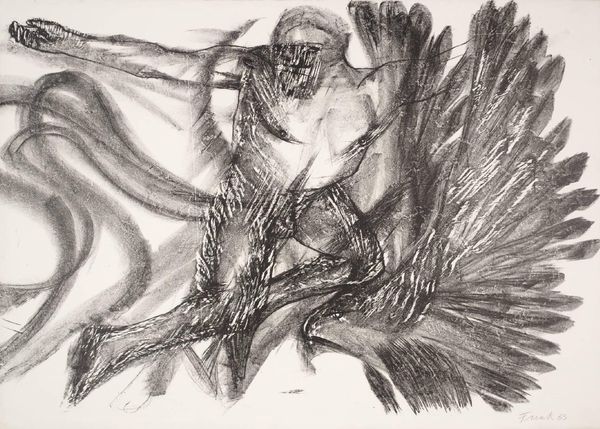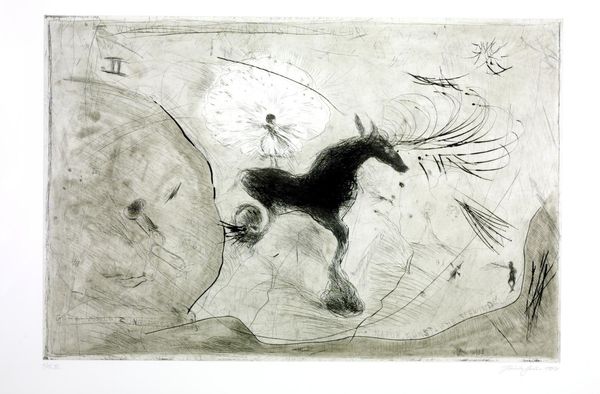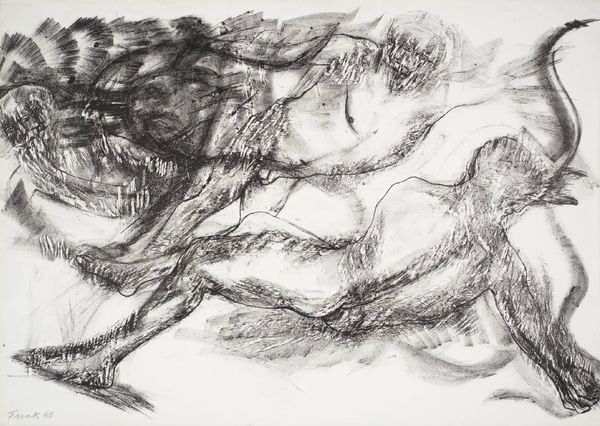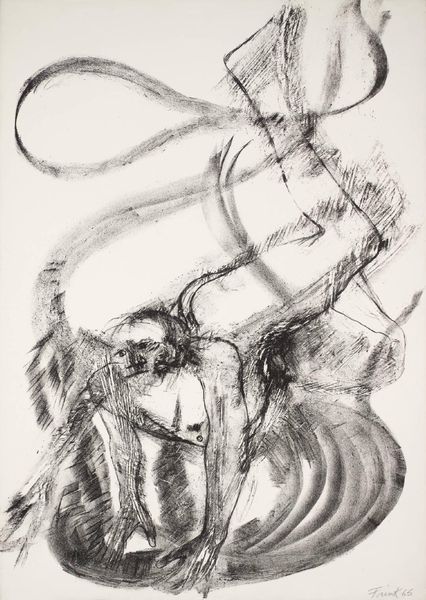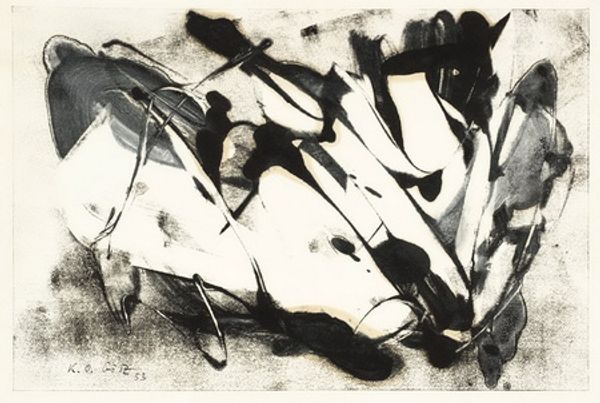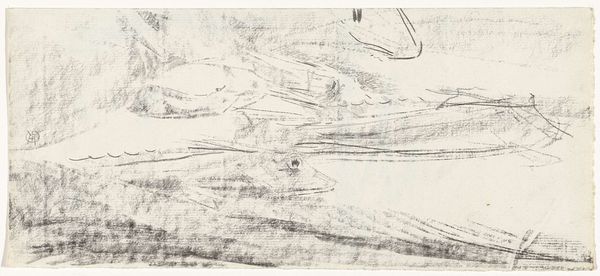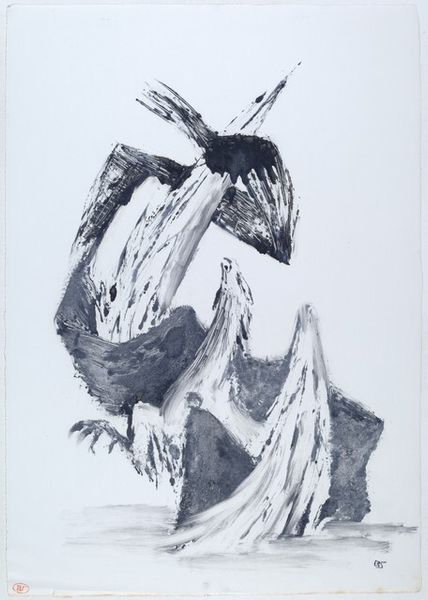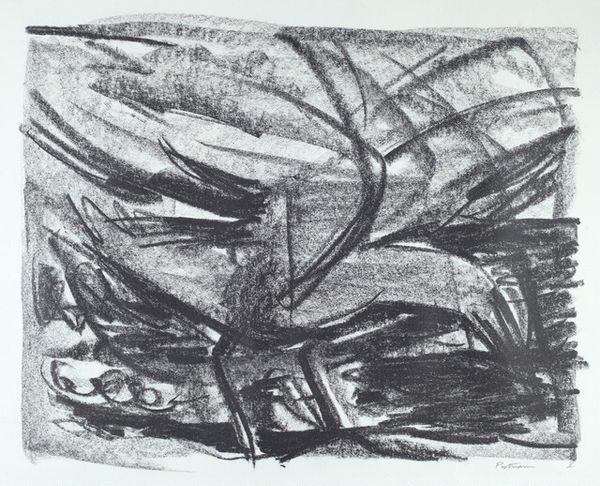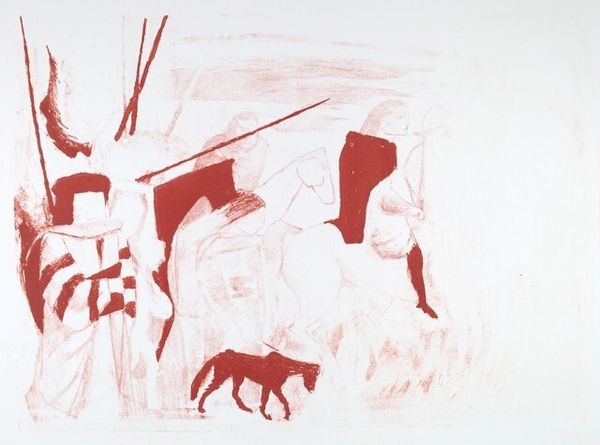
# print
#
figuration
#
history-painting
#
monochrome
Copyright: National Gallery of Art: CC0 1.0
Editor: Here we have Benton Spruance's "Jacob and the Angel," a monochrome print from 1950. The figures seem locked in a tumultuous struggle. What formal qualities stand out to you? Curator: The dramatic interplay of light and shadow is immediately apparent. Spruance masterfully employs lithography to create areas of intense contrast, heightening the sense of conflict. Observe the positioning of the figures; the composition uses diagonals that pull our eye into the vortex of the struggle. Editor: I can see that! It feels almost chaotic, but there is also something very deliberate about the arrangement. Do you see symbolism in it? Curator: While the narrative element of Jacob wrestling the angel is certainly present, I am drawn to the way the formal elements mirror this conflict. The angular shapes versus the rounded forms; the rough texture opposing the smooth surfaces. It's a binary relationship manifested through purely visual means. Editor: That makes sense. I hadn't considered the textural differences so much. I was focused on the symbolism of wings and bodies intertwined. Curator: The tension resides not only in the represented subject matter, but fundamentally in how the work is constructed as an aesthetic object. We can almost "feel" the weight of Jacob, and the supernatural form that dominates him, through contrasts of light and dark alone. Does understanding this technical approach change your view? Editor: Absolutely. I can appreciate the layers of meaning created by the technical elements. Now it all fits perfectly with the epic struggle being portrayed. Curator: Precisely. Formal elements constitute a visual rhetoric, enhancing and expanding thematic concerns. It’s this careful layering that separates compelling art from the merely illustrative.
Comments
No comments
Be the first to comment and join the conversation on the ultimate creative platform.


